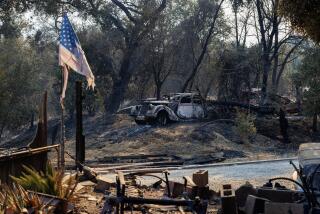Tighter condo lending rules could hurt distressed areas
Money is already tight at the Wilshire Condominium, and new lending rules threaten to make life even more difficult for it and other condos around the country.
Arthur Barr, a board member of the Wilshire homeowners association, estimates that 30% of the owners in the 378-unit building in North Miami Beach are behind on their fees. That makes it difficult to pay for things like elevator repairs and gardening.
Now, Fannie Mae -- the biggest player in the mortgage market -- wants to ensure that if it’s backing a loan for a condominium, the building is in good shape. If the building is brand new, Fannie Mae wants to be certain that there are enough owners to pay for maintenance and preserve the value of the property.
Sound simple? Nothing is simple in Washington these days.
The new rules were designed to protect buyers and lenders, but they may make it harder for condo owners to sell. That could hobble the recovery of the condo market.
And in the end, critics say, the rules will mean that cash-strapped homeowners associations like the Wilshire’s won’t be able to maintain the very buildings that Fannie Mae wants to preserve.
“I guess things can get much worse before they’re going to get better,” Barr said.
Under the new regulations, Fannie Mae will reject any mortgage for a condo buyer if more than 15% of the other owners are delinquent on their association fees. What’s more, Fannie Mae will guarantee mortgages in new or newly converted condo developments only if 70% of the units are sold or under contract.
Critics say the rules, which went into effect this month, could force some new developments into filing for bankruptcy because the 70% requirement will be hard to fulfill if buyers can’t get a loan.
There’s already more than a year’s supply of condos for sale. And about 93,000 new units are expected to be completed this year, a 28% jump from 2008, according to Reis Inc., a New York real estate firm.
“By setting the higher threshold they’ve reduced their risk of making these loans, but they’ve also virtually killed the potential for many projects to be successful,” said developer Jeff Spear, owner of the Spear Group in Fort Lauderdale, Fla. “It’s going to make it extremely difficult for this inventory to get absorbed.”
The riskiest market in the country is Miami, which saw a building boom beginning in 2002. Since then, about 38,000 condo units have been built or are under construction in Miami-Dade County, with more than 22,000 of those in or near Miami, said Jack McCabe, president of McCabe Research & Consulting.
“It’s not surprising that developers are talking about a death spiral,” McCabe said. “There are so many units that are unsold and they are unable to pay off construction loans.”
He estimated that as many as 40% of the 16,000 completed units in Miami remain unoccupied. More than a half-dozen condo projects in the Miami area are stalled because sales have slowed to a crawl and the credit needed to build them has disappeared, said Jennifer Drake, a real estate attorney with Becker & Poliakoff.
More to Read
Inside the business of entertainment
The Wide Shot brings you news, analysis and insights on everything from streaming wars to production — and what it all means for the future.
You may occasionally receive promotional content from the Los Angeles Times.










